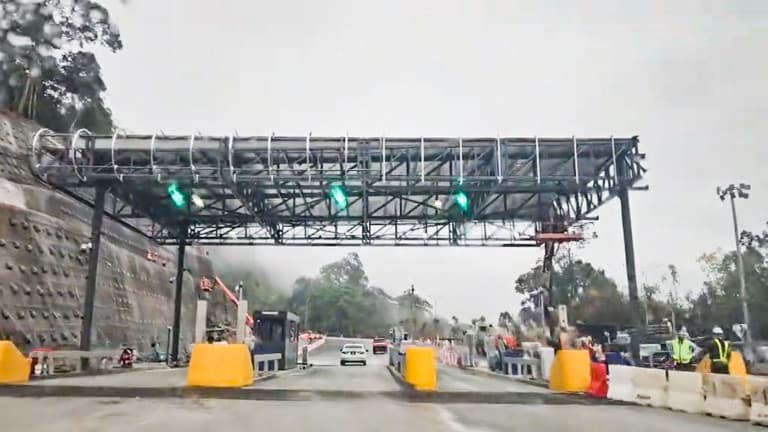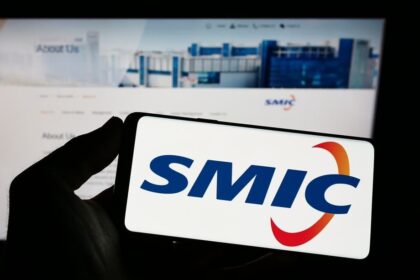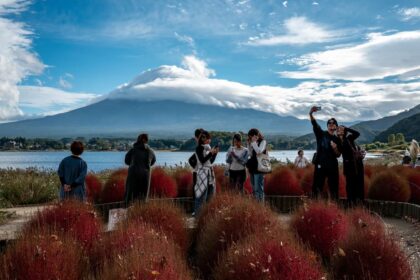Why a private mountain road is set to charge drivers
Drivers heading up Jalan Genting Highlands, the 24 km private mountain road that links the foothills of Pahang to Resorts World Genting and other popular highland destinations, will soon pay a vehicle charge. Genting Malaysia, the road’s owner and operator since the 1960s, has confirmed that a fee will be introduced, with the rate and start date to be announced once final details are ready. The move is framed as a safety and sustainability measure. It is intended to fund the rising cost of maintaining a steep, weather exposed route and the slopes that flank it, work Genting says it has shouldered for decades.
- Why a private mountain road is set to charge drivers
- What Genting Malaysia says about safety and costs
- How a private road charge could work
- Regulatory backdrop and the 2023 gantry pause
- Who will be affected
- What drivers should expect on the hill road
- Planning your trip and costs beyond the road fee
- Why the user pays model is on the table
- What happens next
- Key Points
The road’s origins set it apart from most Malaysian routes. Jalan Genting Highlands was privately planned and built on difficult terrain to open access to a high altitude resort and the surrounding plateau. Over time it became a lifeline for the wider community, not just resort guests. Traffic today includes tour buses, logistics vehicles, workers’ commutes and day trippers from the Klang Valley and beyond. Heavy usage and tropical weather accelerate wear on pavements and structures, and the slopes require constant inspection, drainage upgrades and reinforcement. Genting says a user pays model is the fairest way to secure stable funding for that work and keep the road safe for everyone who relies on it.
What Genting Malaysia says about safety and costs
Steep mountain roads demand more than routine resurfacing. On a corridor like Jalan Genting Highlands, maintenance ranges from slope stabilization and rockfall protection to culvert clearing, hillside drainage, resurfacing, barrier repair and rapid response after storms. Crews must monitor for cracks, blocked drains and slope movement. Landslide risk rises after intense rain, so teams patrol and repair during and after bad weather. Genting says it stations personnel at mid hill and hilltop locations around the clock to handle accidents, breakdowns and weather related issues.
In its statement on the new fee, the company underscored the practical challenge of keeping a mountain road open and safe, and stressed that the route sits entirely on private land.
Genting Malaysia said in a statement:
Working on mountainous terrain is challenging, hazardous and expensive, but it is essential to ensure the safety of the road and the slopes for all users.
The company also highlighted the private nature of the initiative and the guiding principle behind the fee.
Genting Malaysia said:
This is a private initiative on a private road and land. Based on the user pays principle, the private road charge is the most sustainable way to cover upkeep, repairs, maintenance and unforeseen incidents.
The company ties the fee to public benefits beyond the resort gates. The road has supported tourism growth on the plateau for decades, opened opportunities for businesses unrelated to the Genting group and created jobs in Pahang. Genting argues that predictable funding for maintenance secures access for residents, workers and visitors, which in turn supports the local economy that has grown around the mountain corridor.
How a private road charge could work
Key details remain under wraps. Genting has not yet announced the fee amount, the start date or how the fee will be applied across different vehicle types, such as private cars, motorcycles, vans, tour buses and goods vehicles. Those choices will shape how the cost is felt by individual drivers, commercial operators and tour companies. The company has also not stated whether any exemptions or discounts will apply for local residents, employees who use the route daily or public transport fleets.
Private access charges can take several forms. Some are flat fees per entry, others vary by time of day or day of week. A vehicle class approach is common on toll routes, where larger and heavier vehicles pay more because they place higher loads on pavements and require longer braking distances on steep grades. Since the resort’s parking system already runs on cashless payments, including Touch N Go and major cards in some facilities, a digital payment flow for road access would fit common practice in the area, although the company has not confirmed the collection mechanism for the new fee.
Regulatory backdrop and the 2023 gantry pause
The path to a private road charge has not been smooth. In 2023, a stop work order was issued by the Bentong Municipal Council when a gantry structure near Gohtong Jaya appeared before development plans had been submitted. Officials at the time said that any fee collection system would need review by the Pahang state government and relevant federal authorities. The episode underscored that even on private land, a permanent charge on motorists requires coordination with regulators for safety, signage, traffic management and enforcement.
Since then, motorists have circulated images of gantry like installations along parts of the route, and the company has now formally confirmed that a fee will be introduced. The latest statement says implementation details will be announced once finalized. Those details will likely include how vehicles are classified, accepted payment methods, where collection points sit relative to entry ramps and whether any bypasses exist for local traffic.
Who will be affected
The fee will touch a wide set of road users. Jalan Genting Highlands serves more than the resort and its hotels. It links eateries, homestays and attractions across mid hill precincts, as well as highland farms, supply depots and service yards that keep the resort and surrounding communities running.
Tourists and day trippers
For visitors driving up for a day of cooling air, shopping or a show, the fee becomes an extra line item alongside fuel, parking and meals. The effect will depend on the final rate and whether there is any difference between weekdays and weekends. The road charge may lead some groups to carpool, share rides or plan around peak hours. Clear signage and payment options that match what many Malaysian drivers already use will help reduce friction at the gantry.
Tour buses and group travel
Coach operators carry large volumes to the highlands during school holidays, festive seasons and weekends. If the fee scales with vehicle size, operators will need to budget for it in ticket prices or package tours. Any special lanes or prepay options for high capacity vehicles would help buses avoid bottlenecks on steep approaches where stop and go traffic can be stressful for drivers and hard on brakes.
Workers and residents
Thousands of staff work at the resort and in surrounding businesses, many commuting by car or shuttle from the foothills. There are also residents along mid hill precincts who depend on the road for school, shopping and daily life. The company has not indicated whether there will be special arrangements for daily users. Clear communication on this point will matter, since a daily commute across a fee point can add up quickly compared with occasional leisure drives.
What drivers should expect on the hill road
Even with smooth asphalt and good markings, a mountain road demands attention. Rapid weather shifts are common on the Genting range. Afternoon storms can be intense, fog can cut visibility on upper stretches, and water run off can pool at bends if drains clog with leaves or debris. On long descents, brakes can overheat if drivers rely on them rather than engine braking. Heavy vehicles need space and a longer distance to stop. When traffic is heavy, impatient overtakes and tailgating raise risks at curves and hairpins.
Genting says it invests in slope reinforcement, barriers and drains along the corridor and keeps emergency crews in place day and night. Drivers can do their part by starting trips with properly inflated tires, brakes in good condition and a plan to pause at safe bays if fatigue sets in. Use lower gears on descents to avoid riding the brakes, and keep headlights on in rain and fog to help others see you. Follow posted speed limits, watch for maintenance zones and give work crews space when cones and signs narrow lanes.
Reinforcing its 24 hour posture, the company has stressed that trained teams are present on the hill to handle accidents, breakdowns and weather related incidents.
Genting Malaysia said:
Teams are stationed at mid hill and hilltop locations around the clock for contingencies, with trained emergency response teams for mishaps and accidents.
Weekend mornings and holiday evenings see some of the heaviest traffic on the climb and descent. Convoys and group drives are common during these periods. Extra patience and early starts can reduce exposure to congestion and cut the time spent crawling on gradients.
Planning your trip and costs beyond the road fee
Parking on the mountain is cashless at the resort’s main facilities. As of February 2025, public parking at most resort car parks charges a small fee for the first two hours on weekdays and a higher rate on weekends, with a capped daily maximum that ranges roughly from the low teens on weekdays to the high teens on weekends in ringgit. Genting Highlands Premium Outlets has a different schedule and accepts major cards in addition to Touch N Go. Valet services are available at several hotels, with weekday and weekend rates that reflect demand. Genting Rewards members at higher tiers may receive parking waivers when they tap or swipe their cards at entry and exit. Drivers should check current rates before travel, since pricing can change.
Electric vehicle owners will find charging options in mid hill precincts such as Genting Permai and around the resort. Listings on EV apps show a mix of DC fast chargers and AC posts in the area. As always, confirm availability and connector types before you drive up, and factor in cooler temperatures at altitude which can slightly affect charge profiles on some battery packs.
Why the user pays model is on the table
On public roads, upkeep is funded largely by taxes. On private roads, owners can recover costs through access fees if regulations allow. A user pays approach aligns the cost of maintenance with those who drive on the asset most, and it can provide a stable budget for work that cannot be deferred, such as slope stabilization and emergency response capacity. Genting says it has borne these costs on its own since the 1960s while the route became a backbone for a broader community than the resort alone.
Supporters of a fee argue that predictable funding lets engineers plan long cycle projects such as retaining walls and drainage upgrades that improve safety and reduce closures after storms. Critics worry about the burden on daily users and the cumulative cost of travel. The balance often comes down to design choices. If fees vary by vehicle class or time of day, heavy users and peak hour drivers shoulder more of the cost. If daily users receive passes, the burden softens for workers who rely on the corridor. Genting has not said whether any of these structures will apply.
What happens next
Genting says it will announce the rate, start date and operational details once plans are finalized. Drivers can expect clarification on several practical points. These include where the collection point sits relative to familiar landmarks, whether there will be separate lanes for different vehicle classes, the accepted payment methods, and how enforcement will work if a payment fails. The company has not indicated whether charges will vary by vehicle type. Tour operators, freight companies and daily commuters will be watching for those specifics.
For now, plan as you would for any mountain drive. Budget a little extra time and money, check traffic and weather before you set off, and keep your Touch N Go card or payment app funded. Watch for temporary diversions as crews prepare the collection point or carry out slope work. Once the fee is live, early adopters can help keep traffic flowing by arriving with payment ready and using the correct lanes for their vehicle class.
Key Points
- Genting Malaysia will introduce a vehicle charge for Jalan Genting Highlands, a 24 km private road it has maintained since the 1960s.
- The fee is intended to fund safety, maintenance and slope management on a steep, weather exposed corridor.
- Rates, start date, vehicle classes and payment methods have not yet been announced by the company.
- The company says the user pays model is the most sustainable way to cover upkeep and unforeseen incidents.
- Emergency teams are stationed at mid hill and hilltop locations around the clock to handle accidents and bad weather.
- A 2023 stop work order by the Bentong Municipal Council paused a gantry project pending planning submissions and approvals.
- The road supports tourism, local businesses, workers and residents beyond the resort, so clear communication will be key when the fee starts.
- Parking on the mountain uses cashless systems, and EV charging options exist in mid hill precincts and around the resort.












